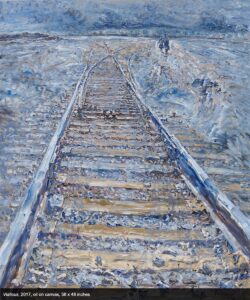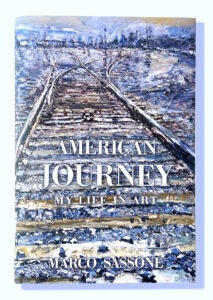What does it take to be ensconced in the “Pantheon of American Art”?
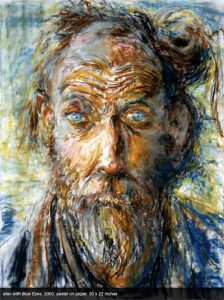
I never told Marco Sassone this story. But with the recent release of his autobiography, American Journey — My Life in Art, it’s about time I did. It’s about his relationship with the late great art historian and impresario Peter Selz [1919–2019]. When he was Chief Curator at MoMA, he mounted seminal exhibitions, from Rodin to Rothko. Then he went on to serve as the founding director of the Berkeley Art Museum. My long drives with Peter were always illuminating. He had that uncanny ability in his conversations to maintain a great sense of humor while pulling no punches about the denizens who inhabited the art world. He knew all of them — art dealers, critics, museum curators, art historians, and especially artists. On one of those long trips, we drove northwest from Berkeley through the rugged forests, winding our way until we arrived at a small graveyard hidden in the forest near the northern coast. Selz wanted to visit the gravesite of his good friend Sam Francis. He also wanted to check on the condition of his own headstone next to it. Little wonder that on our return trip he was in a deeply reflective mood, talking about artists he knew well. Like me, he was frustrated for those artists who, he felt, never received the broader critical recognition they deserved — approval required for being ensconced in that proverbial cultural institution the art market calls the “Pantheon of American Art.” That’s when he brought up the name of Marco Sassone. Turned out both of us knew him well. Selz declared, in his calm and authoritative gravelly German accent, that Sassone was one of those few artists who impressed him deeply as “the real deal” in terms of the quality of his painting as well as the authenticity of his spirit as an artist.
 Peter Selz would have loved Sassone’s autobiography, which unfolds as a vivid, transformational journey. Sassone’s foundation in art began in the 1960s, studying under a master in his native Florence, Italy. In the 1970s, in California, he found success with the maturation of his alluring post-impressionistic style, executed with a mastery of color and bravura brushwork in heavy impasto. He found some fame, too. He dined with Sophia Loren, conversed with Luciano Pavarotti, and joked with Tina Turner at a Beverly Hills opening of his paintings. His final reflections include a lawsuit he won recently in the Nevada Supreme Court over the forgery of his artworks. But what really makes this memoir extraordinary is his revelation that sales never brought a real sense of fulfillment.
Peter Selz would have loved Sassone’s autobiography, which unfolds as a vivid, transformational journey. Sassone’s foundation in art began in the 1960s, studying under a master in his native Florence, Italy. In the 1970s, in California, he found success with the maturation of his alluring post-impressionistic style, executed with a mastery of color and bravura brushwork in heavy impasto. He found some fame, too. He dined with Sophia Loren, conversed with Luciano Pavarotti, and joked with Tina Turner at a Beverly Hills opening of his paintings. His final reflections include a lawsuit he won recently in the Nevada Supreme Court over the forgery of his artworks. But what really makes this memoir extraordinary is his revelation that sales never brought a real sense of fulfillment.
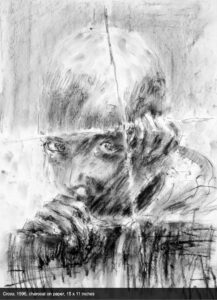 Instead, Sassone went through a painful soul-searching process, examining if there was a bigger objective to painting in the first place. Why does art matter? In the late 1980s, that quest brought him to the back streets of San Francisco where he experienced a deep empathy for the homeless. Sassone was no passive observer. He instead spent hours revisiting characters like “Willie” (above) whose piercing blue eyes and grizzled visage express deep psychological insights. A series of these striking portraits formed the groundbreaking exhibition, Home on the Streets. Peter Selz wrote, “Homelessness, a condition which we have come to know too well in American cities, does not exist in European cities, except in wartime. The Italian painter, therefore, was astounded with what he encountered in San Francisco. He found the homeless a compelling subject for very powerful paintings, in which a fascinating effect is achieved by the contrast of the misery of the motif and the eloquence of the vigorous brushwork.” Ever since, Sassone’s paintings have lived up to Selz’s praise as passionately orchestrated themes of humanism. The artist’s unwavering belief in his own vision shines throughout this book. Ultimately, we are reminded that true innovation in painting only achieves authenticity when the conceptual approach has as its catalyst an intimate inner vision. That’s when the final artwork can elevate the quality of our lives.
Instead, Sassone went through a painful soul-searching process, examining if there was a bigger objective to painting in the first place. Why does art matter? In the late 1980s, that quest brought him to the back streets of San Francisco where he experienced a deep empathy for the homeless. Sassone was no passive observer. He instead spent hours revisiting characters like “Willie” (above) whose piercing blue eyes and grizzled visage express deep psychological insights. A series of these striking portraits formed the groundbreaking exhibition, Home on the Streets. Peter Selz wrote, “Homelessness, a condition which we have come to know too well in American cities, does not exist in European cities, except in wartime. The Italian painter, therefore, was astounded with what he encountered in San Francisco. He found the homeless a compelling subject for very powerful paintings, in which a fascinating effect is achieved by the contrast of the misery of the motif and the eloquence of the vigorous brushwork.” Ever since, Sassone’s paintings have lived up to Selz’s praise as passionately orchestrated themes of humanism. The artist’s unwavering belief in his own vision shines throughout this book. Ultimately, we are reminded that true innovation in painting only achieves authenticity when the conceptual approach has as its catalyst an intimate inner vision. That’s when the final artwork can elevate the quality of our lives.
Ordering the book:
American Journey — My Life in Art, by Marco Sassone (were it not an autobiography, I would have entitled it Sassone — The Authenticity of Spirit)
Available through Amazon and at major booksellers. Published by Arti Grafiche Press in both hardcover. Profusely illustrated throughout its 360 pages.
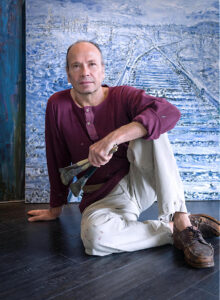
Our Mission:
Connect artist estate collections with galleries and museums
We don’t sell art.
Our affinity galleries do that.
We focus on research, writing, curating, and publishing. Then reaching out to gallery owners and museum curators.
